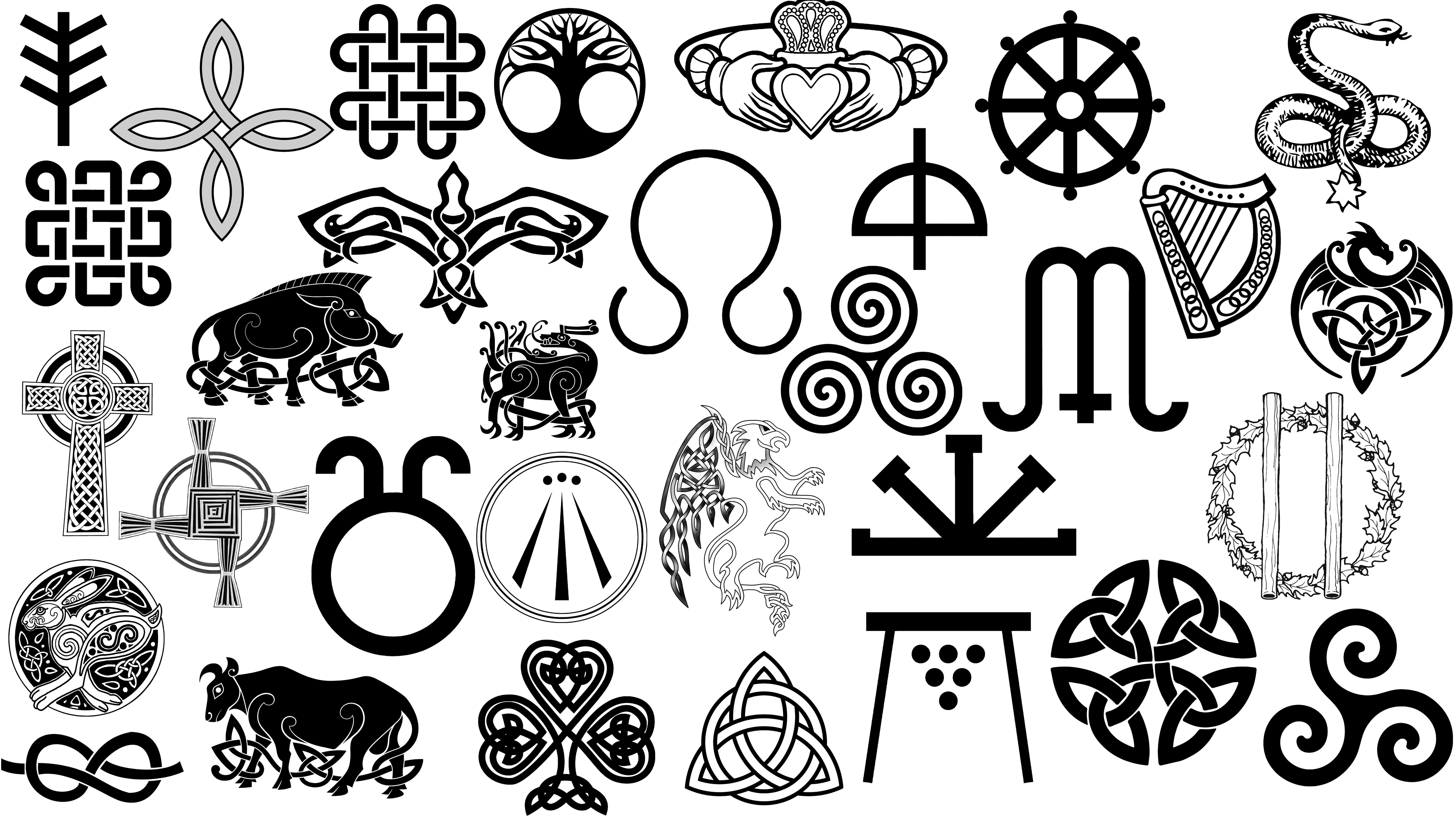Most Famous US Universities Logos
The United States is the leader in the global educational market. This is confirmed by the high rankings of American universities and the desire of tens of thousands of students to obtain a degree in the United States. There are about 4,500 universities of various levels in the United States. About 20 million applicants enroll each year. There are a large number of prestigious and famous ones. Studying at US universities opens up many opportunities: communication among the world’s intellectual elite, new possibilities for employment, and introduction to the world of innovation and entrepreneurship.
Large, reputable educational institutions choose their logo very carefully. From a communication point of view, the presence of a certain symbol makes it easier to communicate with students, and from an administrative point of view, it helps the university team to create a unified community from a group of students from different parts of the world.
Arizona State University
The institution has a seal, but typically it uses the recognizable ASU logo. The image represents burgundy, which is one of the school colors, name abbreviation as well as the full name. The golden color is used to design the sun located behind the middle letter. Since the school’s mascot is Sparky the Sun Devil, the sun in the logo is quite appropriate. It symbolizes both the university itself and the Sunshine State where it is located. The logo looks very recognizable and friendly, creating a welcoming atmosphere.
Columbia University
Columbia University is one of eight Ivy League universities and is considered a prestigious educational institution. Its diverse programs, top-notch facilities, and world-renowned medical faculty attract students from more than 100 countries. One of the main logo elements is the crown, which has historical significance. It has undergone many transformations and dates back to its pre-revolutionary days as King’s College. It incorporates a seal and a shield, just like the majority of institutions. The blue shades give the logo an impression of a solid and trustworthy educational establishment.
Harvard University
The term veritas, which means “truth,” is displayed on a shield in the Harvard University emblem. Before it was adopted as the official mark, the shield represented Harvard for nearly two centuries. It captures its rich history and prestigious reputation. It is a symbol of the university’s dedication to seeking the truth in all fields of study, with a number of ground-breaking findings and innovations serving as proof. In the 19th century, the educational institution acquired a signature crimson color when Harvard representatives wore dark red scarves to the regatta to make them easier to see.
Michigan State University
Since being established in 1855, MSU has grown into one of the largest educational centers in the United States. The logo features the establishment’s name and an iconic profile. The Spartan image creates an impression of a bold, revolutionary, strong, and stable establishment. Strength, perseverance, and leadership people who make up the university are represented by the Spartan. It is also a symbol of the school’s athletic ability. The dark green color not only pays tribute to its agricultural roots, but also serves as a symbol of growth, hope, prosperity, balance, and success.
Pennsylvania State University
Penn State, the university’s acronym, is so well-known that it was chosen to be used on the school’s logo. It has the jaguar, the school’s mascot and a local breed of mountain lion, together with the official blue color of the institution. He is better known as Nathan the Lion. A sculpture of a lion was given to the institution over five decades ago. It represents instructors’ and students’ pride. The shield-like design of the logo and the school’s founding evoke a sense of stability and tradition preservation.
Princeton University
Princeton’s logo has religious roots because it was once a theological seminary. The emblem’s representation of a coat of arms is significant. Graduates from Yale University, another school that made use of the shield, formed it. The colors of the school are also quite significant and have their history. Some versions feature a ribbon with “Dei sub numine viget,” which translates to “Under God’s power she flourishes.” The Bible is clearly meant to be referenced by the open book. Despite no longer being a strictly religious institution, Princeton’s logo honors significant early moments in the school’s history.
Stanford University
Stanford University is not only a university but also one of the most famous private research centers in the world. Stanford is often called the City of Red Trees. Thus, Stanford’s logo is a tribute to the university’s location. Stanford land is very close to the tree that was discovered by the Spanish in the 1700s when building a road. The tree is also part of the official seal. The geometric “S” of a cardinal red color adds a bold and solid touch to the logo. The full name is also typically included in the logo and is printed using a traditional serif font that adds to the grand look of the educational institution.
University of Miami
The history of the University of Miami begins in 1809. The University of Miami’s sports logo, a split U, was created in 1973. It was developed by publicist Julian Cole, a first-time Radio and Television graduate, and graphic designer Bill Bodenhamer. The logo turned out minimalistic and recognizable to an incredible degree. The “U” symbol allowed every student to relate more to the university. It made them feel that the University of Miami is about them and that they will find what they are looking for.
University of Oregon
Oregon State University is the state’s largest university, renowned for its high level of research, particularly in the natural sciences. The University of Oregon’s “O” logo has a hidden meaning. The inside of the “O” represents the shape of the Hayward Field track and the outside represents the shape of Autzen Football Stadium. It is an iconic and simple logo done in a yellow and green color palette. The green color reflects its close connection to nature and care for the environment. Meanwhile, the yellow adds a feeling of energy and positivity.
Yale University
As is the case with many of the oldest and most respected universities, Yale’s logo is its coat of arms. In Europe, educational institutions began to have their own coat of arms as early as the 15th century. At this time, the picture of a book—a defining element of university emblems—was established. Yale University was established when Latin was largely regarded as the language of science. A gold-covered open book with the Hebrew text “Urim Thummim” written on it is depicted on the blue shield. Yale University turned to the Hebrew language to make the establishment and its students stand out as it was a unique language and not to distort the meaning of the Bible.
Carnegie Mellon University
The Carnegie Mellon University logo features a distinct emblem that combines the university’s heritage and its modern aspirations. At the center of the logo is a stylized thistle, a nod to the Scottish heritage of Andrew Carnegie, the university’s founder. The thistle is encased in a golden outline, symbolizing excellence and prestige. Behind the thistle, a vibrant tartan pattern is displayed, representing the university’s Scottish roots and its commitment to tradition. The surrounding text, “Carnegie Mellon University” and “Pittsburgh Pennsylvania 1900,” is written in a classic serif font, emphasizing the institution’s long-standing history and its location. The overall design is both elegant and meaningful, reflecting the university’s blend of innovation and tradition.
Cornell University
Cornell University’s logo is a striking and straightforward representation of the institution’s identity. The logo features a red emblem with an intricate design that includes an open book, symbolizing knowledge and education. Above the book, two shields are displayed, representing the university’s commitment to academic excellence and tradition. The text “Cornell University” encircles the emblem, with “Founded A.D. 1865” below, marking the year of its establishment. The use of red, a color often associated with strength and determination, underscores the university’s dynamic and robust nature. The logo’s simplicity and clarity make it easily recognizable and memorable.
Boston University
The Boston University logo is characterized by its bold and modern design. The primary element of the logo is the text “Boston University,” written in an all-caps serif font that exudes confidence and authority. The use of a vibrant red color reflects the university’s energetic and dynamic spirit, as well as its location in the heart of a bustling city. The white background provides a clean and crisp contrast, ensuring the text stands out prominently. The logo’s straightforward approach conveys a sense of directness and clarity, embodying the university’s commitment to openness and transparency.
University of Chicago
The University of Chicago’s logo is a sophisticated emblem that encapsulates the institution’s rich history and academic prestige. The logo features a maroon shield with intricate designs, including a phoenix rising from the flames, symbolizing rebirth and resilience. The text “The University of Chicago” is prominently displayed above the shield in a serif font, emphasizing the university’s established and esteemed status. The use of maroon, a color associated with strength and ambition, highlights the university’s commitment to rigorous scholarship and intellectual pursuit. The detailed design of the shield reflects the university’s attention to detail and its dedication to excellence.
Brown University
Brown University’s logo is a timeless and elegant representation of the institution’s heritage. The logo features a shield divided into four quadrants, each containing a book, symbolizing knowledge and learning. Above the shield, a crest with a rising sun and clouds represents enlightenment and aspiration. The text “Brown” is displayed in a classic serif font, emphasizing the university’s storied history and academic rigor. The use of black and red in the design highlights the university’s traditional and distinguished nature. The logo’s detailed and meaningful elements reflect Brown University’s commitment to intellectual exploration and excellence.
University of Notre Dame
The University of Notre Dame logo is a distinguished emblem that reflects the institution’s Catholic heritage and academic excellence. The logo features a shield with a golden cross, symbolizing faith and tradition. The text “University of Notre Dame” is prominently displayed in a serif font, underscoring the university’s commitment to both spiritual and intellectual growth. The use of gold and blue in the design conveys a sense of prestige and stability, while the Latin motto “Vita, Dulcedo, Spes” (Life, Sweetness, Hope) highlights the university’s values and aspirations. The logo’s elegant and timeless design embodies Notre Dame’s dedication to education and moral integrity.
University of Maryland
The University of Maryland’s logo is a vibrant and dynamic representation of the institution’s identity. The logo features a globe with a distinctive pattern that incorporates elements of the Maryland state flag, symbolizing the university’s connection to its local heritage. The text “University of Maryland” is displayed below the globe in a serif font, emphasizing the university’s established and reputable status. The use of red, black, yellow, and white in the design reflects the colors of the state flag, highlighting the university’s pride in its Maryland roots. The logo’s modern and colorful approach conveys a sense of innovation and community.
University of Texas at Austin
The University of Texas at Austin’s logo is a bold and iconic representation of the institution’s spirit and pride. The logo features the text “Texas” in a large, serif font, with “The University of Texas at Austin” displayed below in a smaller font. The use of burnt orange, the university’s official color, symbolizes energy, warmth, and tradition. To the left of the text, a shield with a lone star and a laurel wreath represents excellence and achievement. The overall design is straightforward yet powerful, reflecting the university’s commitment to leadership, education, and Texas pride.
University of Virginia
The University of Virginia logo is a classic and refined representation of the institution’s historic legacy. The logo features an orange depiction of the university’s iconic Rotunda, designed by Thomas Jefferson, framed by a series of stars. This symbolizes the university’s foundational role in American education and its enduring commitment to excellence. The Rotunda’s architectural elements highlight the university’s neoclassical design, reflecting its historical and cultural significance. Below the Rotunda, the text “University of Virginia” is prominently displayed in a bold serif font, underscoring the institution’s prestige and academic rigor. The combination of orange and navy blue conveys a sense of tradition, strength, and academic excellence.
Johns Hopkins University
The Johns Hopkins University logo is a sophisticated emblem that encapsulates the institution’s commitment to knowledge and discovery. The logo features a shield divided into three sections. The upper section showcases an open book, symbolizing education and scholarship. The left section contains a globe, representing the university’s global impact and reach. The right section features a pattern reminiscent of the Maryland state flag, highlighting the university’s local roots. Below the shield, the text “Johns Hopkins University” is written in a refined serif font, emphasizing the institution’s dedication to academic excellence. The use of blue in the design conveys a sense of trust, stability, and intellectual depth.
California Institute of Technology (Caltech)
The California Institute of Technology (Caltech) logo is a modern and dynamic representation of the institution’s focus on innovation and scientific advancement. The logo features a circular emblem with a torch, symbolizing enlightenment and knowledge, held by a hand. This imagery reflects the university’s mission to illuminate the world through scientific discovery. The text “California Institute of Technology” encircles the emblem, with “1891” marking the year of its founding. The use of a bold orange color conveys energy, creativity, and forward-thinking. The accompanying text “Caltech” is written in a sleek, contemporary font, highlighting the institution’s cutting-edge approach to education and research.
Emory University
The Emory University logo is a distinguished emblem that reflects the institution’s commitment to tradition and academic excellence. The logo features a shield with two crossed trumpets and a torch, symbolizing proclamation, enlightenment, and the pursuit of knowledge. This imagery underscores the university’s dedication to spreading knowledge and fostering intellectual growth. The text “Emory University” is displayed to the right of the shield in a classic serif font, emphasizing the institution’s storied history and academic rigor. The use of blue in the design conveys a sense of trust, stability, and scholarly depth, aligning with the university’s values and mission.
University of California, Berkeley
The University of California, Berkeley logo is a bold and iconic representation of the institution’s legacy and academic prowess. The logo features the text “Berkeley” in a large, serif font, with “University of California” displayed below in a smaller font. This design highlights the university’s affiliation with the University of California system while emphasizing its unique identity. The use of a deep blue color conveys a sense of wisdom, trust, and academic excellence. The simplicity and clarity of the design make it easily recognizable and reflective of the university’s commitment to open inquiry and innovation.
University of North Carolina at Chapel Hill
The University of North Carolina at Chapel Hill logo is a classic and elegant representation of the institution’s historic significance and academic excellence. The logo features an image of the Old Well, an iconic campus landmark, symbolizing the university’s long-standing traditions and commitment to education. The text “The University of North Carolina at Chapel Hill” is displayed to the right in a refined serif font, emphasizing the institution’s prestigious status and comprehensive educational offerings. The use of Carolina blue in the design conveys a sense of tradition, serenity, and academic integrity, reflecting the university’s values and heritage.
Washington University in St. Louis
The Washington University in St. Louis logo is a distinguished emblem that embodies the institution’s commitment to truth and knowledge. The logo features a shield with a series of stars and fleurs-de-lis, symbolizing enlightenment and the university’s dedication to fostering intellectual growth. The text “Per Veritatem Vis” (Strength Through Truth) is prominently displayed within the shield, highlighting the institution’s core values. Encircling the shield, the text “Washington University in St. Louis” and “1853” marks the year of its founding. The use of red and green in the design conveys a sense of tradition, excellence, and academic rigor, aligning with the university’s mission.
University of California, Davis
The University of California, Davis logo is a modern and straightforward representation of the institution’s commitment to innovation and academic excellence. The logo features the text “UC Davis” in a bold, serif font, with “University of California” displayed below in a smaller font. This design emphasizes the university’s affiliation with the University of California system while highlighting its distinct identity. The use of gold and blue in the design conveys a sense of prestige, stability, and intellectual depth. The clean and clear design reflects the university’s dedication to open inquiry, research, and educational achievement.
University of California, Los Angeles (UCLA)
The University of California, Los Angeles (UCLA) logo is a dynamic and recognizable emblem that captures the vibrant spirit of the institution. The logo features the text “Ucla” in a flowing, cursive script that conveys a sense of energy and creativity. The use of blue, a color associated with trust, wisdom, and confidence, reflects the university’s commitment to academic excellence and innovation. The simplicity and elegance of the design make it easily identifiable and memorable, embodying UCLA’s values of openness, inclusivity, and forward-thinking.
University of Wisconsin-Madison
The University of Wisconsin-Madison logo is a distinguished representation of the institution’s rich history and academic excellence. The logo features a bold red shield with a prominent white “W” at its center, symbolizing the university’s identity and pride. The shield is framed by an ornate, golden scrollwork, highlighting the institution’s heritage and tradition. Below the shield, the text “Wisconsin” and “University of Wisconsin-Madison” are displayed in a serif font, emphasizing the university’s prestigious status. The use of red and gold conveys a sense of strength, courage, and achievement, aligning with the university’s mission and values.
University of Florida
The University of Florida logo is a modern and straightforward emblem that reflects the institution’s commitment to excellence and innovation. The logo features the initials “UF” in bold, blue letters, with the text “University of Florida” displayed to the right. The use of blue and orange, the university’s official colors, symbolizes trust, strength, and enthusiasm. A vertical orange line separates the initials from the full name, adding a touch of modernity and dynamism to the design. The clean and clear typography makes the logo easily recognizable and reflective of the university’s dedication to education and research.
Northwestern University
The Northwestern University logo is a refined and elegant representation of the institution’s academic excellence and tradition. The logo features a circular emblem with an open book at its center, surrounded by rays of light, symbolizing knowledge and enlightenment. Encircling the emblem, the text “Northwestern University” and “1851” mark the year of the university’s founding. Below the emblem, the text “Northwestern University” is displayed in a classic serif font, emphasizing the institution’s prestigious status. The use of purple, a color associated with royalty and wisdom, conveys a sense of dignity and intellectual depth, reflecting the university’s values and heritage.
Massachusetts Institute of Technology (MIT)
The Massachusetts Institute of Technology (MIT) logo is a bold and modern representation of the institution’s focus on innovation and technology. The logo features the initials “MIT” in a geometric, sans-serif font, with each letter composed of vertical and horizontal bars. This design reflects the university’s emphasis on engineering, architecture, and design. To the right of the initials, the text “Massachusetts Institute of Technology” is displayed in a clean, sans-serif font, emphasizing the institution’s full name. The use of red and gray in the design conveys a sense of energy, precision, and professionalism, aligning with MIT’s mission and values.
Texas A&M University
The Texas A&M University logo is a bold and iconic representation of the institution’s pride and tradition. The logo features a large “ATM” monogram, with the “T” positioned above and between the “A” and “M,” creating a cohesive and recognizable symbol. Below the monogram, the text “Texas A&M University” is displayed in a serif font, emphasizing the institution’s prestigious status. The use of maroon, the university’s official color, symbolizes strength, determination, and leadership. The straightforward and powerful design reflects Texas A&M’s commitment to excellence in education, research, and community service.
University of California, Santa Barbara (UCSB)
The University of California, Santa Barbara (UCSB) logo is a modern and elegant representation of the institution’s coastal location and academic excellence. The logo features the initials “UCSB” in a bold, serif font, with two wavy lines below, symbolizing the ocean waves. This imagery reflects the university’s proximity to the Pacific Ocean and its commitment to environmental research and sustainability. The use of blue in the design conveys a sense of calm, stability, and trust, aligning with the university’s values and mission. The clean and clear typography makes the logo easily recognizable and reflective of UCSB’s vibrant and dynamic community.
Vanderbilt University
The Vanderbilt University logo is a distinguished and elegant representation of the institution’s commitment to academic excellence and innovation. The logo features a large, stylized “V” in gold, symbolizing prestige, success, and intellectual achievement. To the right of the “V,” the text “Vanderbilt University” is displayed in a refined serif font, emphasizing the institution’s prestigious status. The use of gold and black in the design conveys a sense of sophistication, tradition, and excellence, reflecting Vanderbilt’s values and mission. The sleek and modern design makes the logo easily recognizable and reflective of the university’s dedication to leadership and education.
Duke University
Duke University, located in Durham, North Carolina, is known for its rigorous academics and esteemed research programs. The Duke University logo is an elegant and classic representation of the institution’s prestige. The word “Duke” is rendered in a bold, serif typeface, signifying tradition and academic excellence. The deep blue color of the logo represents trust, intelligence, and authority, which aligns with Duke’s reputation as a leading university in the United States. The simplicity of the logo makes it easily recognizable and reflects the university’s focus on clarity and distinction in education.
Rice University
Rice University, situated in Houston, Texas, is a private research university known for its strong emphasis on science and engineering. The Rice University logo features the institution’s name alongside a shield emblem. The shield is decorated with three owls, which are symbolic of wisdom, a trait highly valued by the university. The blue color in the logo conveys a sense of stability and trust, while the shield format denotes protection and tradition. This logo reflects Rice University’s commitment to excellence and its rich heritage in providing top-tier education.
University of Illinois Urbana-Champaign
The University of Illinois Urbana-Champaign, a flagship public university, is recognized for its extensive research programs and diverse academic offerings. The logo prominently features an “I” in bold, solid orange, bordered by a dark blue outline. This simple yet powerful design signifies the university’s strong identity and presence. The orange color symbolizes enthusiasm, creativity, and determination, traits that the university aims to instill in its students. The logo’s straightforward design reflects the university’s focus on innovation and forward-thinking.
Dartmouth College
Dartmouth College, located in Hanover, New Hampshire, is one of the oldest and most prestigious Ivy League institutions. The Dartmouth logo features a large, stylized “D” with a detailed pine tree inside, symbolizing the college’s strong connection to nature and its picturesque campus. The green color in the logo represents growth, renewal, and stability. The clean and modern design of the logo mirrors Dartmouth’s commitment to maintaining its rich traditions while continuously evolving to meet contemporary educational standards.
Ohio State University
The Ohio State University, located in Columbus, Ohio, is a leading public research university known for its comprehensive programs and vibrant campus life. The logo consists of a bold red “O,” symbolizing the Buckeye spirit and the university’s dynamic community. The red color conveys passion, energy, and a sense of urgency, reflecting the university’s active and competitive spirit. The simplicity and strength of the logo design highlight Ohio State’s emphasis on clear communication and strong identity within the academic community.
University of Iowa
The University of Iowa, located in Iowa City, Iowa, is known for its strong emphasis on research and arts programs. The university’s logo features a classic and elegant representation of the Old Capitol dome, a central and historic landmark on campus. The black color used in the logo signifies authority, tradition, and excellence. The clean lines and timeless design of the logo reflect the university’s dedication to providing a high-quality education and its commitment to maintaining its historic roots while fostering innovation.
University of Minnesota
The University of Minnesota, located in Minneapolis and Saint Paul, is a major public research university known for its extensive academic programs and vibrant campus life. The logo features a bold, maroon “M” which stands for Minnesota, representing the university’s strong identity and pride. The maroon color signifies determination, creativity, and a sense of belonging. The simple and robust design of the logo reflects the university’s focus on delivering quality education and fostering a strong sense of community among its students and faculty.
University of Washington
The University of Washington, located in Seattle, is renowned for its leading research programs and strong emphasis on public service. The logo features a distinctive “W” in a deep purple color, symbolizing the university’s rich history and regal heritage. The purple color conveys wisdom, ambition, and respect, aligning with the university’s mission to educate and inspire future leaders. The clean and straightforward design of the logo highlights the university’s commitment to excellence and its role as a significant educational institution on the West Coast.
Georgia Institute of Technology
The Georgia Institute of Technology, commonly known as Georgia Tech, is a top-tier public research university located in Atlanta, Georgia. The university’s logo features a detailed emblem to the left and the institution’s name in bold, blue serif font to the right. The emblem, which includes an arch and torch, symbolizes enlightenment and knowledge. The year 1885 marks the institution’s founding, while the words “Progress and Service” encapsulate its mission. The gold color of the emblem signifies excellence and high standards, complementing the blue text that represents trust, stability, and intellect.
New York University
New York University (NYU), situated in the heart of New York City, is one of the largest private universities in the United States. NYU’s logo is distinguished by its bold, purple color and a stylized torch, symbolizing enlightenment and knowledge. The torch is set within a square, representing the institution’s solid foundation and stability. The simple, modern design of the logo reflects NYU’s progressive approach to education and its vibrant, dynamic urban environment. The purple color conveys ambition, creativity, and a sense of prestige, aligning with the university’s global reputation.
University of Colorado Boulder
The University of Colorado Boulder, commonly referred to as CU Boulder, is a public research university renowned for its strong programs in sciences and engineering. The logo features a stylized “CU” in gold and black, which are the university’s official colors. This emblem is paired with the university’s full name in a clean, modern typeface. The gold color symbolizes excellence and high achievement, while the black adds a sense of authority and tradition. The simplicity and clarity of the logo reflect CU Boulder’s commitment to innovation and academic excellence.
Indiana University Bloomington
Indiana University Bloomington, the flagship campus of the Indiana University system, is known for its strong arts and sciences programs. The university’s logo features a bold, red trident symbol above the name “Indiana University.” The trident, a traditional symbol of strength and power, reflects the university’s enduring legacy and influence. The red color signifies passion, energy, and a strong sense of community. The serif typeface used for the university’s name adds a touch of tradition and formality, aligning with the institution’s rich history and academic rigor.
University of California, San Diego
The University of California, San Diego (UC San Diego), is a prominent public research university located in La Jolla, California. The logo features the institution’s name in a clean, modern font with “UC San Diego” prominently displayed. Below the name is a subtle golden line, adding a touch of elegance and sophistication. The blue color used in the text represents trust, stability, and depth of knowledge, while the gold line symbolizes excellence and high standards. The logo’s simplicity and clarity reflect UC San Diego’s focus on innovation and forward-thinking education.
University of Pittsburgh
The University of Pittsburgh, often referred to as Pitt, is a public research university located in Pittsburgh, Pennsylvania. The logo features a shield with three castle-like towers, representing strength and protection, and a checkered pattern in blue and gold. These colors symbolize loyalty, trust, and excellence. The name “University of Pittsburgh” is displayed in a serif typeface, conveying tradition and academic prestige. The logo’s elements highlight the university’s commitment to providing a robust and secure environment for learning and research.
University of Southern California (USC)
The University of Southern California (USC), located in Los Angeles, is a leading private research university. The logo features a shield with three torches and a rising sun, symbolizing enlightenment and the dawn of knowledge. The letters “USC” are prominently displayed in red, a color representing passion, energy, and strength. The name “University of Southern California” follows in a classic serif typeface, adding a touch of tradition and formality. The combination of red and black in the logo reflects the university’s dynamic spirit and authoritative presence in higher education.
University of Pennsylvania
The University of Pennsylvania, commonly known as Penn, is an Ivy League university located in Philadelphia. The logo features the word “Penn” in a bold, blue serif font, coupled with a detailed shield to the left. The shield includes a dolphin, books, and chevrons, representing various facets of knowledge and the university’s maritime history. The colors blue and red signify trust, tradition, and academic excellence. The clean and elegant design of the logo underscores Penn’s commitment to providing a distinguished and comprehensive education, rooted in a rich historical context.
Tufts University
Tufts University, located in Medford and Somerville, Massachusetts, is a prestigious private research university known for its emphasis on active citizenship and global perspectives. The Tufts logo features a serene blue color, symbolizing trust, wisdom, and loyalty. To the left of the university’s name, the emblem includes an open book, signifying knowledge and learning, with a dove holding an olive branch above it, representing peace and enlightenment. The year “1852” marks the institution’s founding, adding a touch of historical significance. The bold serif font used for “Tufts” conveys a sense of tradition and stability, while the overall design reflects the university’s commitment to fostering a peaceful and educated society.
University of Arizona
The University of Arizona, located in Tucson, is a leading public research university known for its strong programs in science, engineering, and business. The logo prominently features a bold, red “A” encased within a navy blue outline, creating a striking and memorable visual identity. The red color symbolizes passion, energy, and the pioneering spirit of the university, while the navy blue adds a sense of authority and tradition. Below the “A,” the word “Arizona” is displayed in a classic serif font, emphasizing the institution’s proud heritage and academic excellence. This logo reflects the university’s dynamic and forward-thinking approach to education.
Rutgers University
Rutgers, The State University of New Jersey, is a major public research university known for its comprehensive programs and vibrant campus life. The Rutgers logo features the university’s name in a bold, red serif font, signifying passion, energy, and determination. Below the name, the phrase “The State University of New Jersey” is displayed in a clean, modern typeface, highlighting the university’s official status and broad reach. The simplicity of the design emphasizes clarity and focus, while the red color conveys the university’s dynamic spirit and commitment to excellence in education and research.
University of Michigan
The University of Michigan, located in Ann Arbor, is one of the oldest and most distinguished public universities in the United States. The logo features a prominent, bold “M” in maize, the university’s official color, representing energy, creativity, and enthusiasm. The word “Michigan” is displayed in a deep blue, conveying trust, stability, and academic excellence. The combination of maize and blue creates a strong visual identity that is instantly recognizable. The serif font used in the logo adds a touch of tradition and formality, reflecting the university’s rich history and commitment to providing high-quality education.
University of Massachusetts Amherst
The University of Massachusetts Amherst, the flagship campus of the University of Massachusetts system, is known for its strong research programs and diverse academic offerings. The logo features a classic shield emblem with the image of the Old Chapel, a historic landmark on campus, in maroon. The maroon color symbolizes leadership, courage, and passion. The university’s name is displayed to the right in a serif font, with “Amherst” highlighted in maroon to denote the specific campus. The overall design reflects the university’s dedication to maintaining its historic roots while promoting academic excellence and innovation.
Purdue University
Purdue University, located in West Lafayette, Indiana, is a renowned public research university known for its strong engineering, technology, and agricultural programs. The logo features the university’s name in a bold, black serif font, symbolizing authority, tradition, and academic excellence. Below the name, a thin gold line adds a touch of elegance and sophistication, representing the university’s high standards and achievements. The gold color signifies excellence, success, and prestige. The clean and straightforward design of the logo underscores Purdue’s focus on clarity, innovation, and its commitment to providing a world-class education.
University of California, Irvine (UCI)
The University of California, Irvine, commonly referred to as UCI, is a renowned public research university located in Irvine, California. The UCI logo features the acronym “UCI” in bold, blue letters, with “University of California, Irvine” written in a clean, modern font to the right. The blue color represents trust, stability, and intelligence, reflecting UCI’s commitment to academic excellence and research innovation. The simplicity and clarity of the logo emphasize the university’s focus on forward-thinking education and its reputation as a leading institution within the University of California system.
Syracuse University
Syracuse University, located in Syracuse, New York, is a private research university known for its strong programs in communications, business, and public administration. The logo prominently features an orange “S” next to the university’s name in a serif font. The orange color symbolizes enthusiasm, creativity, and determination, traits that Syracuse University aims to instill in its students. The serif font adds a touch of tradition and formality, while the overall design reflects the university’s vibrant and dynamic campus environment.
Case Western Reserve University
Case Western Reserve University, located in Cleveland, Ohio, is a private research university known for its strong emphasis on science and engineering. The logo features the university’s name in a bold, blue font, with a stylized sunrise icon to the left. The blue color signifies trust, stability, and intellectual depth, while the sunrise symbolizes new beginnings, enlightenment, and the pursuit of knowledge. The clean and modern design of the logo underscores the university’s commitment to innovation and excellence in research and education.
University of California, San Francisco (UCSF)
The University of California, San Francisco, commonly known as UCSF, is a leading public university dedicated exclusively to health sciences. The UCSF logo features the acronym “UCSF” in bold, black letters, with “University of California, San Francisco” written in a clean, modern font to the right. The black color represents authority, excellence, and prestige, reflecting UCSF’s status as a premier institution in medical education and research. The simplicity and clarity of the logo emphasize the university’s focus on cutting-edge healthcare advancements and its reputation for excellence in the health sciences field.






































































